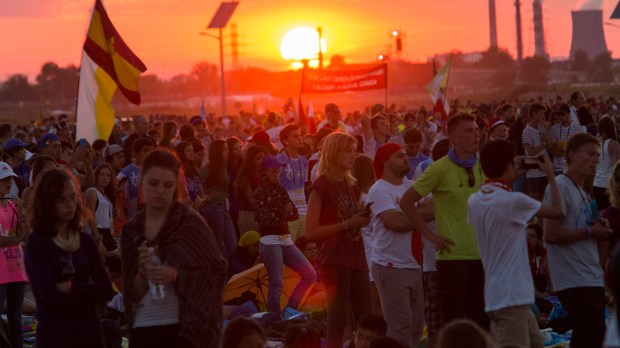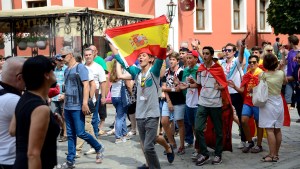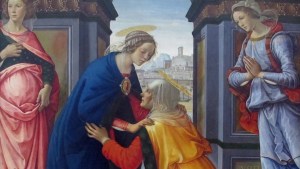Marcello Bedeschi, an Italian association leader, was one of the initiators of the World Youth Days (WYD) in the 1980s. He went on to preside over the “Youth Church Hope Foundation” from 1991 to 2021, renamed the “John Paul II Youth Foundation” after the death of the Polish Pontiff in 2005.
He speaks with us about the beginnings of the incredible events that have come to be known as World Youth Day — sharing anecdotes from some of the first gatherings, and a perspective on how WYD is marking the Church.
How did your close relationship with John Paul II contribute to the creation of WYD in 1984-85?
Marcello Bedeschi: I got to know Karol Wojtyla in the 1960s-70s, when he was still Archbishop of Krakow. He had a special bond with my bishop in Ancona (Italy), Carlo Maccari, who had sat next to him during the Second Vatican Council. In their telephone conversations, and also when my bishop sent me on missions to Poland, I always noticed this cardinal of Krakow’s great interest in the accompaniment of young people.
He was always talking to us about young people, remarking on their enthusiasm and their joy at being together. In Poland, he organized a number of meetings that were, in a way, the first steps towards WYD. This represented a vision of Catholicity as a way of relating to one another as brothers and sisters.
When he became pope, he desperately sought an opportunity to put this idea into practice. At the end of the Holy Year of the Redemption in 1983-84, the idea was born of a meeting of reflection and prayer for young people in Rome to enable them to encounter the Lord.
Thus it turned out that I was part of a four-person committee to organize this meeting in conjunction with the Pontifical Council for the Laity. Italian Cardinal Opilio Rossi led the council at that time, soon replaced by Cardinal Eduardo Pironio, who was to play a decisive role in the launch of WYD.
So it was on the basis of this first gathering that the concept of WYD gradually took shape?
Bedeschi: This first meeting in 1984 attracted young people from 80 countries, which was a great surprise. John Paul II then took the opportunity of the UN International Year of Youth to launch the idea of another meeting, in 1985. This meeting, again in Rome, also worked very well. This led John Paul II to write a letter formalizing the idea of World Youth Days, which would alternate between the diocesan level and a worldwide meeting that would be organized every two or three years.
The first diocesan WYD took place in 1986, followed by the first WYD held abroad in 1987 in Buenos Aires. John Paul II personally oversaw the entire project, including all its details and symbols, such as entrusting young people with the WYD cross so that it could be taken all over the world. This took place even in unthinkable places, including when the cross was smuggled beyond the Iron Curtain into Communist countries. I remember those trips with great intensity.
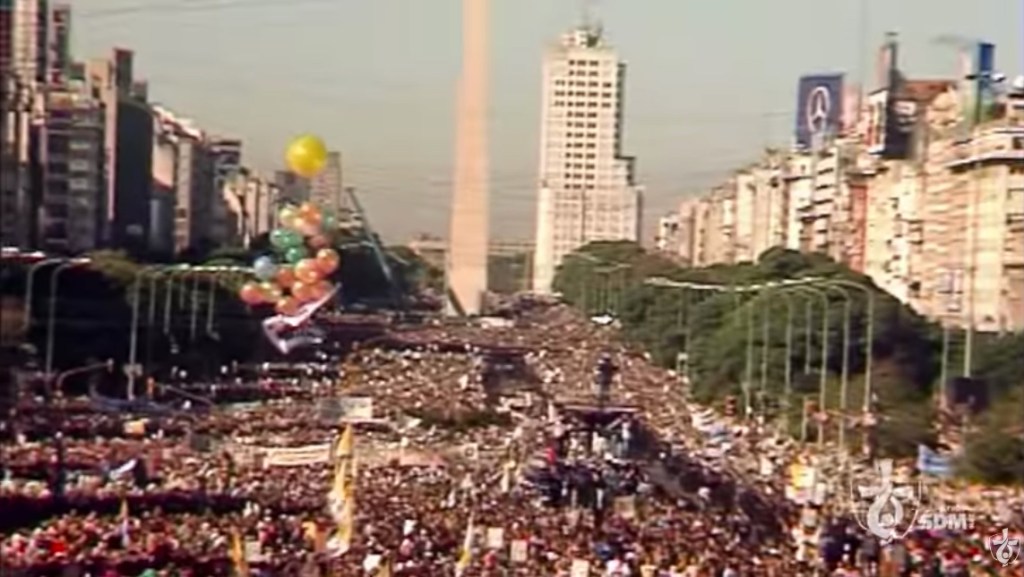
How did you go about choosing the first host towns?
Bedeschi: Many national Churches wanted to host WYD. Cardinal Pironio’s Argentine nationality led to the organization of the Buenos Aires WYD, in which Fr. Jorge Mario Bergoglio (the future Pope Francis) participated as a simple Jesuit priest. In 1989, the WYD in Santiago de Compostela put the spotlight back on the significance of pilgrimage and walking. Pilgrims from all over Europe converged on Spain by a wide variety of means. This movement helped popularize walking as a means of encountering God.
The Pope wanted these meetings to help Catholics reflect on the most important questions linked to the Christian faith. WYD has also developed a cultural dimension, with exhibitions organized in collaboration with the Vatican Museums. At WYD Cologne 2005, the exhibition on the Face of Christ was like another catechesis in itself, in addition to the teachings offered by the bishops.
At WYD Rio, Pope Francis’ meeting with indigenous Amazonians at the Apostolic Nunciature helped launch his reflection on ecology, which led to the encyclical Laudato Si’ and the Synod on Amazonia. The John Paul II Foundation for Youth has been very active in organizing workshops on these topics at subsequent WYDs in Krakow, Panama, and now Lisbon.
The French have fond memories of WYD in Paris in 1997. It marked an important milestone for many Catholics, giving them renewed impetus at a time when they felt fragmented and a minority in the midst of a secularized society. Did the Paris event mark a turning point in the history of these gatherings?
Bedeschi: Indeed, the press review of the Paris WYD, in both Catholic and “secular” newspapers, shows that the event was fundamental. It demonstrated the ability of young people to engage in dialogue, to mobilize together to bring the Christian message to life.
Many memories of Paris in 1997 remain engraved in my mind. I remember, for example, that we organized an exhibition on Jesus at Paris City Hall. This provoked a few protests from secular activists, but the works were a great success.
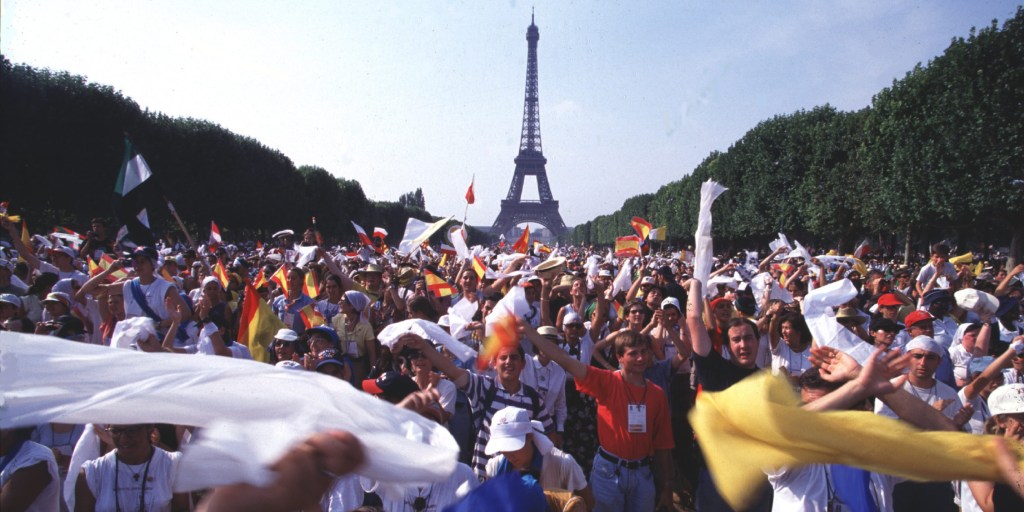
I was also struck by an incident during the welcome celebration on the Champ de Mars, opposite the Eiffel Tower: John Paul II burned himself on the armrests of his iron armchair, which were boiling hot due to the heat and lack of shade. A soldier rushed to the military academy barracks, just behind the podium, to provide another, more comfortable chair for the Pope. John Paul II was touched and amused by this gesture, and he often told me about it!
WYD continued after the death of John Paul II in 2005. What do you think of the way his successors have handled this legacy?
Bedeschi: There’s no doubt that John Paul II was the original initiator, but he also wanted the passing of the baton to happen naturally. The idea was therefore taken up by Benedict XVI and Pope Francis, both of whom have very different characters, but who show real continuity in the way they attend WYD.
The relaunch of the Lisbon WYD after the Covid-19 pandemic was not a foregone conclusion, but it has gradually been put back on track. From Italy, we were counting on 20,000 young people taking part: we’ve now registered 65,000. The same phenomenon can be observed in all European nations. So there’s a real craze!
One of the things that moves me the most are the vocations that are born at WYD: priestly, religious, family, professional vocations … For many young people, even in times of crisis, WYD has provided a decisive impetus for their vocation, the orientation of their life. Priests and leaders of Catholic movements need to be aware of this.
